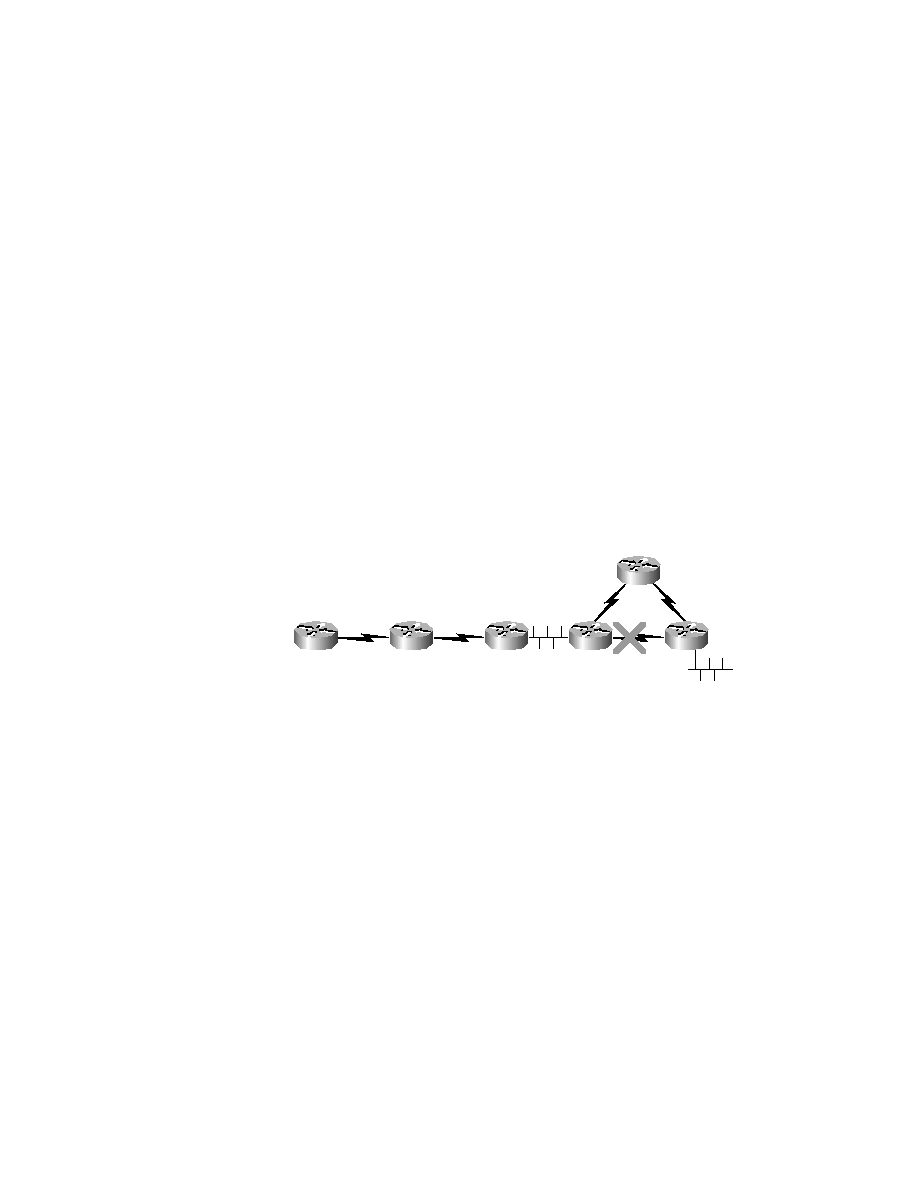
48
Chapter 2
Routing Principles
occurring on a network when a link failure has been detected. Hold-down
timers are used to give the network stability while new route calculations are
being performed. Since a network cannot converge during this hold-down
period, this can cause a delay in the routing process of the network. Because
of this slow convergence time, link-state routing protocols do not use hold-
down timers.
The following section will describe the convergence process for both RIP
and IGRP when a link failure occurs in a network.
RIP Convergence
Convergence time is one of the problems associated with distance-vector
protocols. This section details the convergence process of the RIP protocol.
We'll use Figure 2.6 to help describe the RIP convergence process.
F I G U R E 2 . 6
Convergence
The following list describes the RIP convergence events when a problem
occurs. In Figure 2.6, the WAN between Routers D and F goes down. Here
is what happens:
1.
RouterD sends a poisoned route to Routers E and C. RouterC
informs RouterB, which in turn sends the poisoned route to RouterA.
RouterC purges the entry for the downed link from the routing table.
2.
RouterD sends a query broadcast. RouterC responds with a poison
reverse, and RouterE responds with a route to that network. Router D
enters this route in the routing table.
3.
RouterD does not hold down this route entry since it had just purged
a route entry to this link.
A
B
C
D
E
F
Copyright ©2001 SYBEX , Inc., Alameda, CA
www.sybex.com
